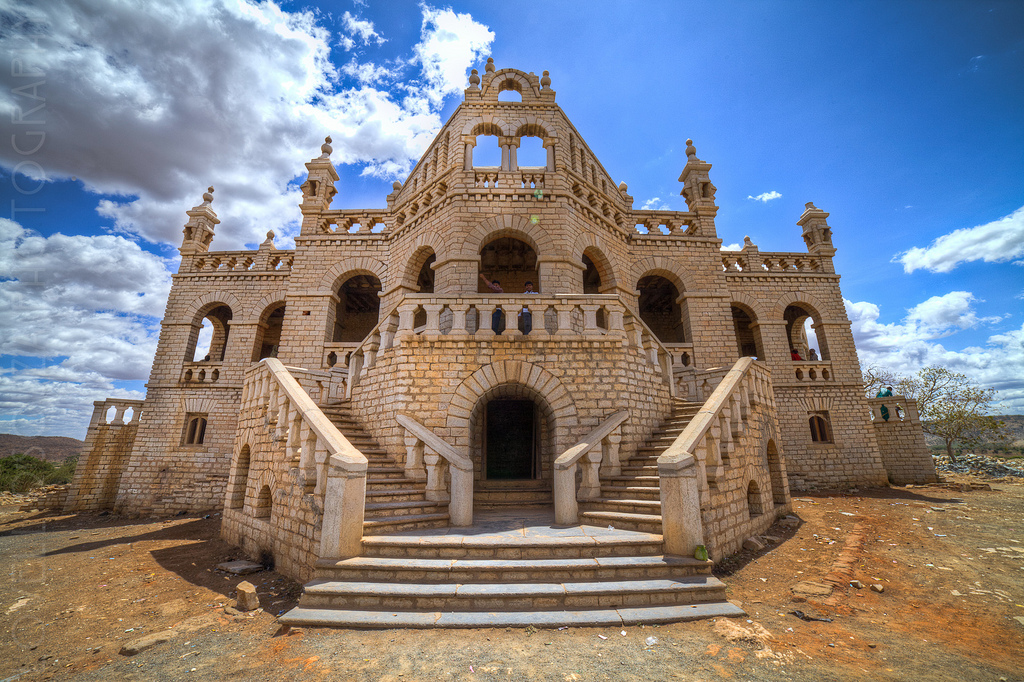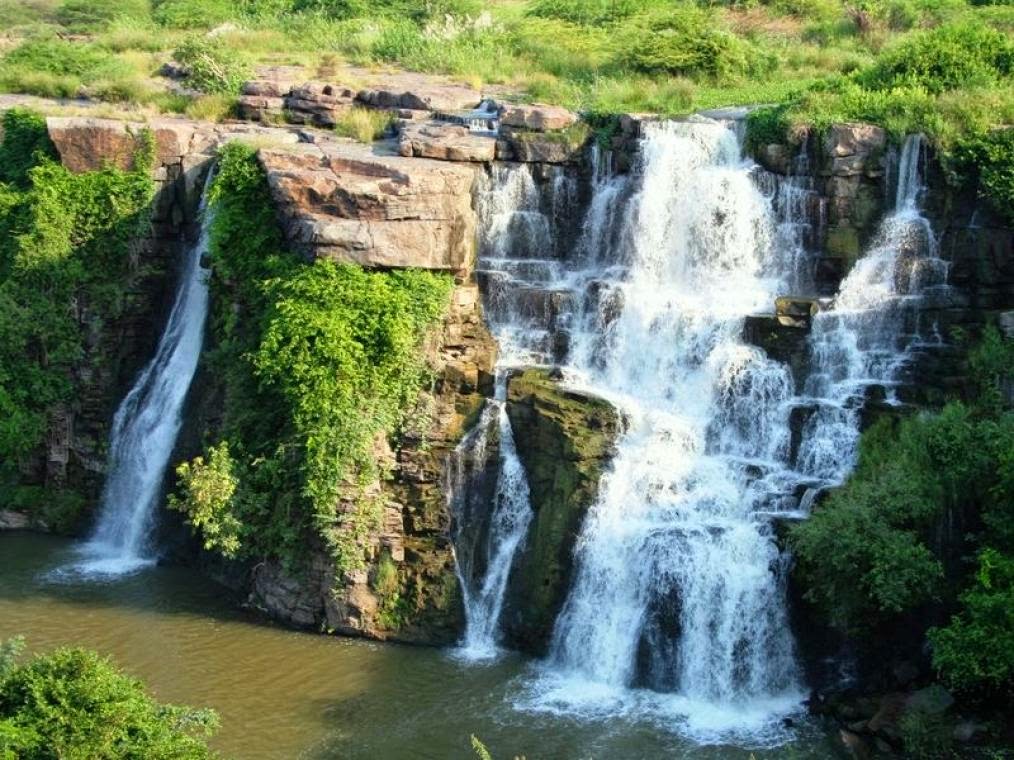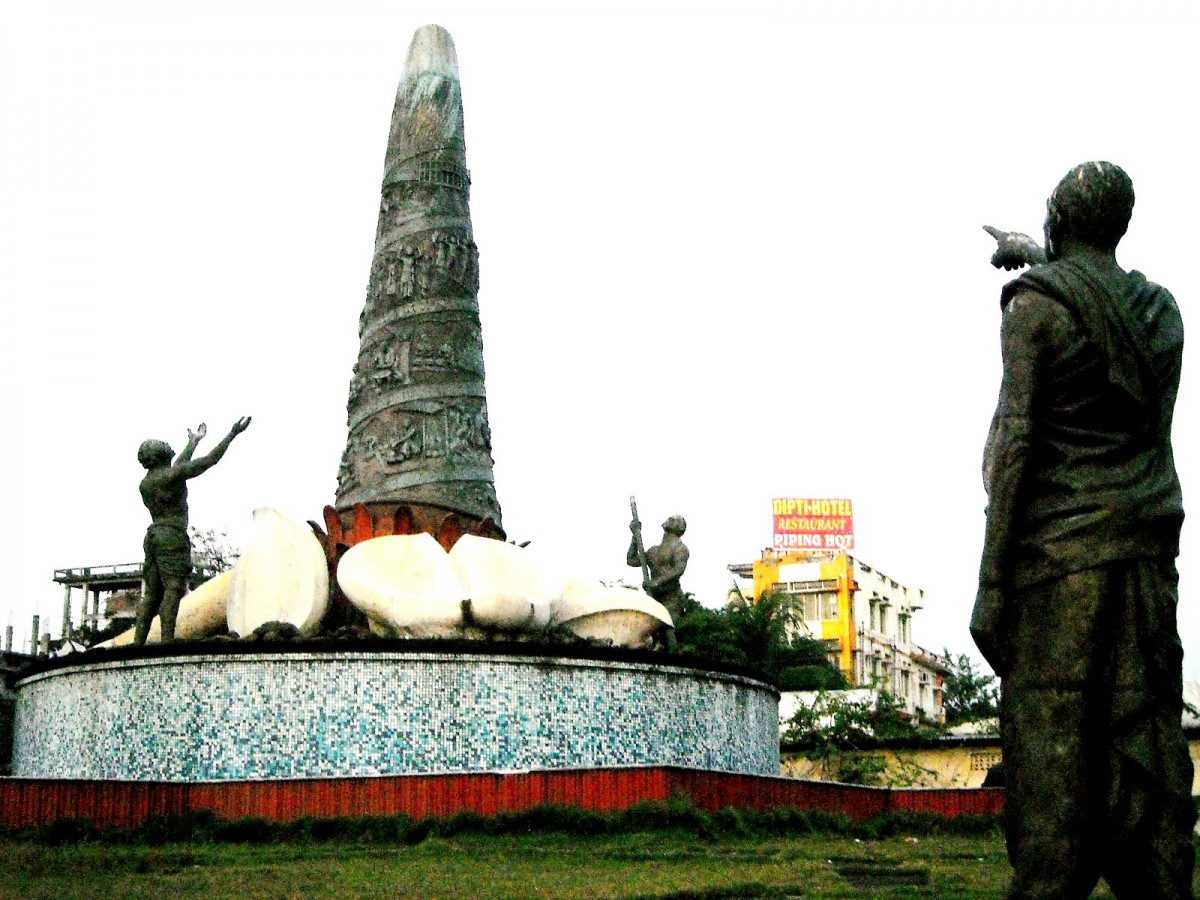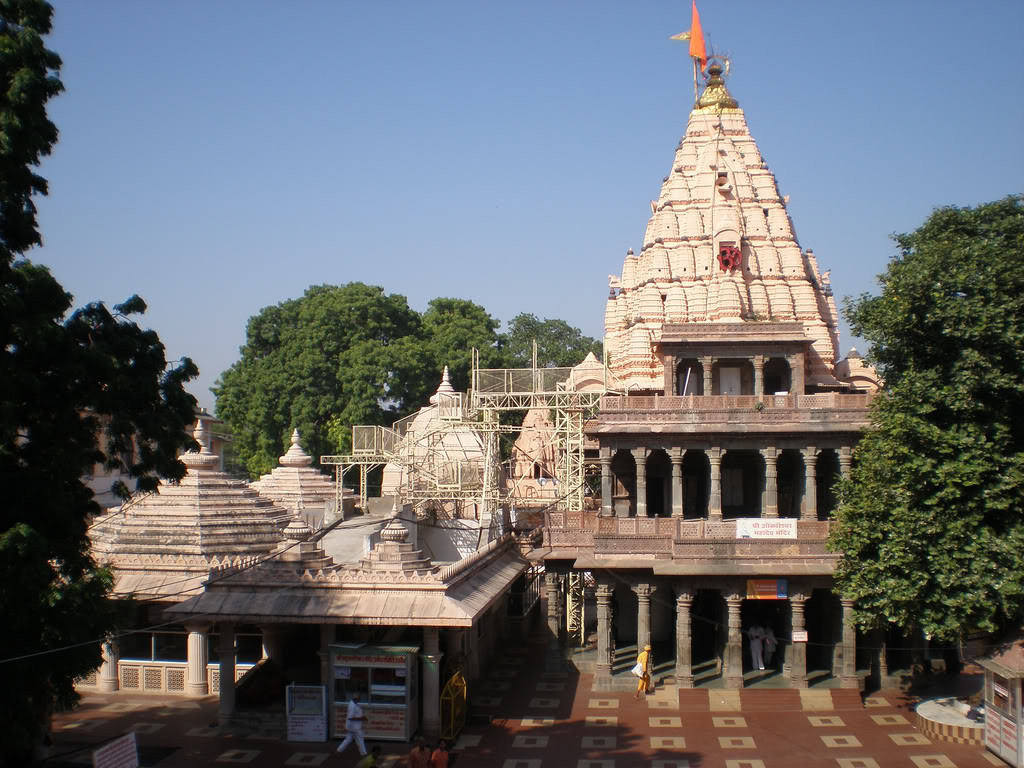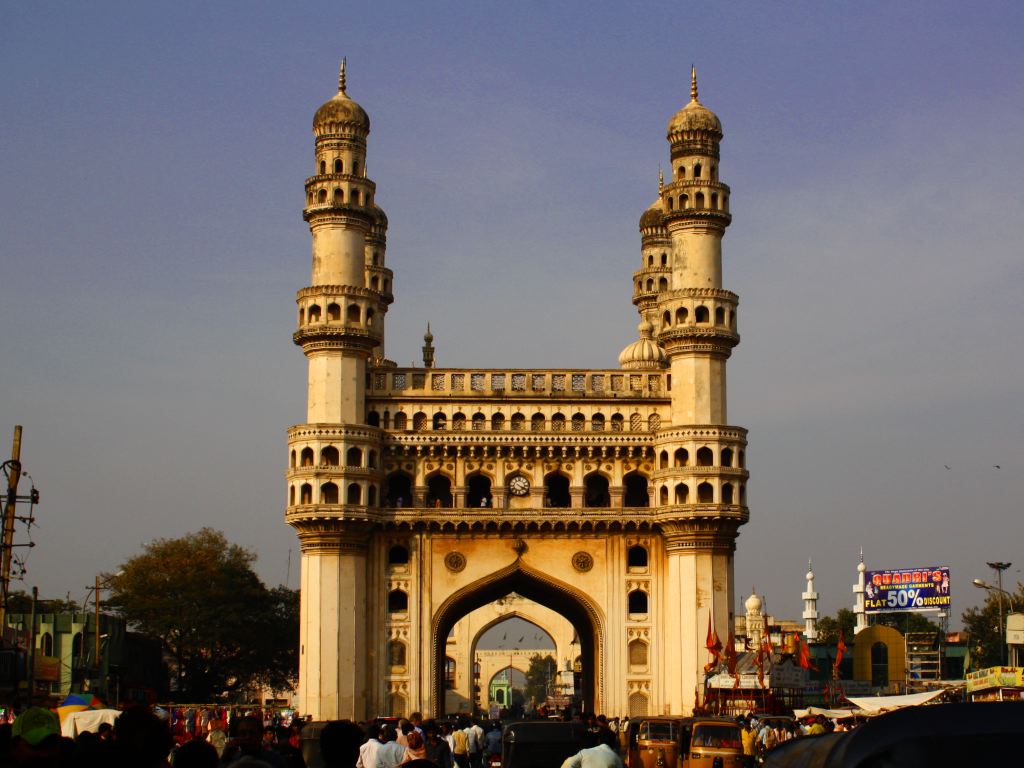
Hyderabad Tourism and Travel Guide
History of Hyderabad: Hyderabad The history of Hyderabad city is a rich and an intriguing one. While touring the city of Nizams, you might want to know the history behind certain places. Thus it is always better to have some primary information about the ancestral past and origin of Hyderabad so that you get an idea as to how the place used to be and how has it evolved into the present city that it is now.
The Hyderabad city has witnessed the rise and fall of many dynasties. It was during the rule of the Qutub Shahis that the city flourished and many palaces and beautiful monuments and forts were built, which added to the beauty of the city. Hyderabad was previously known as Golconda. Mohammed Quli Qutub Shah of the Shahi Dynasty named it Hyderabad. It is said that he fell in love with a humble courtesan named
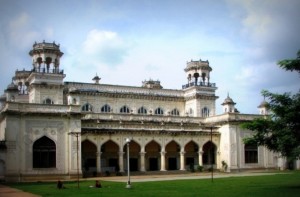
Bhagmati. He named the city Bhagyanagar after her. After they got married, she changed her name to Haider Mahal and that is how the city was named Hyderabad. Literally translated, Hyderabad means the “city of Haider”. Hyderabad flourished during his reign extensively as it became an important trading zone for all the merchants coming from Asia and Europe.
The fame and abundant prosperity of the Hyderabad city reached the ears of the powerful Mughal ruler Aurangazeb who captured and plundered the wealth of the flourishing Hyderabad city. Aurangazeb then ruled the city of Hyderabad with his newly appointed Prime Minister Asaf Jah. When the Mughal rule came to an end, Asaf Jah became the ruler of the whole Deccan region, which undoubtedly includes Hyderabad city. In 1798 Nizam II, the second Asaf Jahi ruler signed a pact with the British and East India Company that made the British troops stay nearby. The British chose a place near the Hussain Sagar Lake and became involved in building Secunderabad, the twin city of Hyderabad. It was named after the Nizam Sikander Jah.
As India gained independence, the state got its first democratic government and the representatives of its 18 million people were initiated to the Constituent Assembly drafting a constitution for free India. For the following eight years, Hyderabad continued to be a separate state within the union of India. On November 1st, 1956, the states of India were restructured on linguistic basis. Accordingly, the territories of the state of Hyderabad were separated between newly created Andhra Pradesh, Bombay (later Maharashtra), and Karnataka. Hyderabad and the surrounding areas were added to Andhra Pradesh based on Telugu linguistic majority and that is how Hyderabad became the capital of the new state of Andhra Pradesh.
How to Reach Hyderabad by Air: Hyderabad is well connected to national and international destinations with both national and international air carriers. Hyderabad has two airports, the Rajiv Gandhi Terminal is the international airport and the N. T. Rama Rao Terminal is the domestic airport in the city.
Hyderabad Besides Taj Mahal, there are other tourist attractions in Agra worth visiting. Built in massive red sandstones on the bank of Yamuna, the Agra Fort built by emperor Akbar in 1565 is another major historical tourist attraction in Agra. It is popular with tourists as a towering fort as well as How to Reach Hyderabad by Rail: The Indian Railway, the world’s largest railway under a single
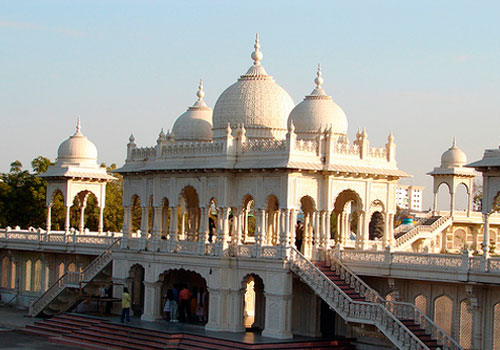
management, is divided into nine zones. Secunderabad, the twin-city of Hyderabad, is the headquarters of the South Central Zone. Hyderabad is the major point of arrival or departure. Hyderabad railway station is well connected to all the major Indian cities with a number of daily express trains from Hyderabad to the other cities of India.
How to Reach Hyderabad by Road: Hyderabad has a large bus terminus and is well connected to other cities in the state by a network of highways. The Andhra Pradesh State Road Transport Corporation (APSRTC) buses and buses belonging to other South Indian State Roadways also operate from here. The APSRTC also conducts a number of tours and excursions around the city. The Andhra Pradesh State Road Transport Corporation (APSRTC) connects Hyderabad to every city, town and all except very small villages in the state. Express and luxury coaches are available for inter-city and interstate services. The APSRTC city control is at Ranigunj Depot at Secunderabad. Several private travel services run by tour operators/travel agents are also available.
Cuisine: The geographical location of Hyderabad has been a major influence on its varied cuisine, which ranges from the Hyderabadi style with its strong Mughalai influence, to a pure Andhra cuisine – hot and spicy. Hyderabad also has a good number of places for Chinese food, and several Punjabi ‘Dhabas’. For a quick meal or a snack, one has a choice between western fast foods and the Indian ‘chats’. The city has its ubiquitous Irani Hotels, serving thousands of cups of tea everyday. For the diet-unconscious, Hyderabad probably has the largest number of ice cream brands to offer. In addition, the city’s main shopping areas are crowded with sweet shops offering a mind-boggling variety of sweet and snacks. The entries are listed below cuisine wise, and good places to have them are listed under each entry in smaller print. This is in no way an exhaustive list you are bound to find an excellent hotel which we may have missed!
Hyderbad: Umm! The mouth watering Shahi cuisine of Hyderabad. As soon as a person hears the mention of Hyderabadi Biryani, he starts whetting his appetite! The wafting aroma hits you before you set your eyes on the delicious mounds of fragrant, steaming rice with the tempting sight of a traditionally cooked chicken peaking out! It is so popular that it takes a special mention in the world of cuisine’s. A part from this king of the delicacies, the entire Shahi Nizam cuisine is very popular for its rich and aromatic taste. “The food is a dream of deliciousness”, said the Persian Ambassador who came to the Qutub Shahi Kingdom in 1603. The elaborate Dastarkhan, on which are place steaming hot dishes of dum ka murgh, a baked chicken full of savoury herbs and spices. Lagan ke kebab, bhagare bhaingan, machili ka qualiya, mirch ka salan, haleem, and different kinds of Biryanis severed with Bhurani. Even the desserts are world renowned. Khubani ka meeta, badaam ki jaali, hub ke laoz, azam jahi meetha, etc, satiate you beyond imagination.
Hyderabad Another speciality eaten very early in the morning is Nahari, a curried soup of sheep’s trotters and tongue. It cooks all night, and a nothing stale is considered edible, it is served up right away in soup bowls, and you drunk in piece of spongy Sheermahal bread. And during the festival day of Id-ul-Fitr, it is traditional to serve sheer quorma, the delicious kheer, made with sevian, dried fruits and dates.
This cuisine owes its origins to the Mughalai style of cooking of the Asaf Jahi period. By carefully mellowing and nurturing the typical Mughalai flavours with a blend of spices, the cuisine of Hyderabad was born. While there is a certain exotic quality to some of the royal foods, it is also known that a true Hyderabadi will go any where in the city for a well prepared dish, however humble its origin.
For those who want a taste of the royal menu, there is a variety of Biryanis (a rice and meat preparation, seasoned with spices and flavourings); Kababs (meat pieces or minced meat cooked in many different styles such as Boti Jhammi, kalmi, Shikampur, Sheek, Lagan-ke-kababs, Dum-ke-
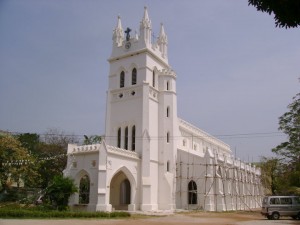
kababs); Khormas (either meat or vegetables cooked in a rich creamy gravy) and Lukhmi (pastry). During the month of Ramzan, one gets to taste Haleem (a pounded wheat and meat preparation). For those who prefer more homely food, there is Kichri (a rice a lentil preparation); Kheema methi (minced meat with fenugreek); Nahari (stew of tongue and lamb trotters); Rumali Rotis (bread as thin as a handkerchief) and Chakna (a spicy dish of meat).
For vegetarians there is Bagara Baingan (a rich spicy preparation of aubergines); Mirch-ka-salan (chillies in a creamy gravy); Tomato kut (aromatic puree of tomato with flavourings); and Shahi dahi vadas (lentil dumplings in youghurt sauce).
For dessert, on can have a pick from Double-ka-meetha (a bread and cashewnut pudding); Qubani-ka-meetha (stewed apricod dessert); Anday-ka-piyosi (made with eggs, mild, almonds and purified butter); Badam-ki-jhab (marzipan) and Dil-e-Firdaus (a rich, milk-based sweet).
Good Places Firdaus (Krishna oberoi, Banjara Hills) Dhak (Gateway Hotel, Banjara Hills), Hotel Akbar (M.G.Road), Azizia Hotel (Nampally), Hotel Madina (Pattargatti), Garden Restaurant (S.D.Road), Banjara Darbar (Panjagutta), Hotel Parwez (Nampally). Many small hotels and restaurants around the Charminar area also offer some authentic Hyderabadi dishes – a few of them serve ‘Haleem’ throughout the year. The Chaknawadi around Charminar area is famous for its ‘Chakna’, but one must go before 2.00 P.M.
Andhra & the South Indian: The Andhra cuisine is distinct for its hot and spicy food with a range of chutneys, curries, meat preparations and pickles. One can also taste the cuisines of Karnataka (Udipi) and Tamil Nadu – the omnipresent dosas, idlis and vadas.
Good Places Raaga (Holiday Inn, Banjara Hills), Amaravathi (Hyderguda), Abhiruchi (S.D.Road), Hotel Rajdoot (Lakdi-ka-pul), Abhilasha (R.T.C x Roads), Hotel Indu Deluxe (Saifabad). For vegetarian cuisine: Taj Mahal Hotel (Narayanguda, Koti, S.D. Road & Abids), Hotel Shanbagh (Panjagutta, Basheerbagh), Mithila (Koti), Kamat Hotel (Nampally, S.d. Road. Saifabad)
Chinese: Hyderabad also boasts of a number of Chinese restaurants ranging from the inexpensive to the exclusive.
Good Places Hai King (Himayatmagar), Golden Dragon (Park lane), Blue Diamond (Fateh Maidan), Nanking (Park Lane), Kontiki (Banjara Hills), Pearl City (S.P.Road), Alex’s Kitchen (Himayatnagar), Shogun (Hyderabad), Chung Hua (Basheerbagh), Schezwan Garden (Hotel Krishna Oberoi, Banjara Hills).
Fast Foods: For somebody looking for a quick and filling snack, there are many western-style fast food joints which offer pizzas, burgers, sandwiches, etc.,
Good Places: Pick ‘n’ Move (Himayatnagar), Big Mac (S.D. Road), Niralas Open House( Himayatnagar) Prabhat Fast Food (Banjara Hills), Potluck Cafe (Gateway Hotel, Banjara Hills).
Hyderabad There are also several places serving Indian fast foods. For the adventurous, the Punjabi Dhabas ont he outskirts of the city (Hyderabad-Bombay Highway) offer a unique culinary experience. These ‘dhabas’ are located on open tracts of land with benches and charpoys (a wooden cot with jute netting) to sit on. These offer the best in Punjabi foods – both vegetarian and non-vegetarian. A part from these, there are quite a few places which serve ‘chats’ (spicy snacks) like samosas, bhelpuri, panipuri, tikki, pav bhaji, etc.
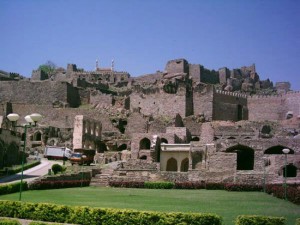
Then there are the very visible, very hyderabadi, Irani Hotels, with their glitzy interiors and marble-topped tables. The crowd in almost all these hotels is exclusively male. One can sit in these hotels, for hours on end, with a cup of the spiced tea that is their speciality. The discussions in these hotels may range from philosophy to politics to some of the latest rumours in town!
Desserts: The number of ice cream parlours seems an ever-expanding one, with popular brands such as Kwality, Dollops, Vadilal, Scoops, Yankee-Doodle, Jumani, Go Cool, Funn and many more. Most of these parlours have places to sit and enjoy your ice creams. In addition, the range of sweets and snacks available in the sweet shops – omnipresent in Hyderabad- is bound to make one’s head spin.
Good places for sweets: Santosh Sweets (Kingsway), Bombay Halwa (Monda Market, Begumpet), Pulla Reddy (Nampally, Panjagutta), Almond House (Himayatnagar), Balaji Bajrang (Narayanaguda), Madhuban (S.D. Road, Khairtabad)
Pubs: Although many restaurants around the city serve liquor, the pub culture is new to hyderbad – in fact, just over two years old. In the brief period, at least 20 pubs have come up in the city, each having a distinct style. The pubs, the Bier Keller for instance, is designed in the style of a German World War II Nazi bunker! One of the largest pubs is named 10, Downing Street!
Good Places: Bier Keller (S.D. Road), Sailor’s Inn (Paradise), Cloud 9 (Begumpet), Oaken Cask (Basheerbagh), Barrel House Street (Panjagutta), Beat Route (Park Lane), Pivot Pub (Punjagutta), Rock Castle (Banjara Hills), 10, Downing Street (S.D. Road), Black Cadilac (R.P.Road).
Paan: No meal in Hyderbad is complete without Paan (betel leaf wrapped around a mixture of betelnut, aniseed, cloves, cardamom, gulkand). There are paan shops, almost one every few metres – quite a few of them an extension of the innumerable Irani Hotels. These shops sell a variety of paans- the most popular being ‘Meetha’, ‘Ram Pyare’, ‘Meenakshi’, etc., Offering paan is a tradition in Hyderabad and most Muslim household still keep the ‘Paan – Daan’ a specially crafted silver container meant to hold all the ingredients for making paans.
Monuments
Charminar: Hyderabad Charminar – the principal landmark of the city is among the wonders of India. It was built by the ruler Quli Qutab Shah in honour of his Hindu wife Bhagmati. According to legends, this is the place where the king first saw his lover and was attracted by her beauty. The monument is surrounded by a very busy market place and is located in a prominent area of the old city.
This magnificent edifice has four huge minars or pillars, hence called Charminar. Built to a height of 56.7meters (186 feet) and on a square base of 31.5 meters (100 feet), Charminar is said to be a prototype of Tazia, a representation of the tomb of Imam Husain. The monument has the same importance as that of Statue of Liberty in USA and the Eiffel Tower in Paris. Charminar is one of the most famous buildings representing the historical remains of not only Hyderabad and Deccan region but the whole India.
Golconda Fort: This fort, originally built by the Kakatiyas, the rulers of the neighboring state, was made with mud. Later, the Shahis converted it into a marvelous piece of architecture using advanced acoustics wherein sound signals could pass from the entrance of the fort to the top without the use of any electric gadgets. There is a sound and light show in the evening which is quiet popular.
The grand fortress is protected by three formidable lines of defense. The first, an outer fortification made up of granite blocks. The middle wall surrounds the base of the hill and the innermost one follows the contours of the highest ridge. The fort was famous for its great hoard of diamonds, mined nearby. The Kohinoor diamond was a celebrated jewel of the fort, now a part of the British Crown Jewels.
Legislative Assembly: Formerly known as the Hyderabad Town hall, the Andhra Pradesh legislative assembly is the seat of administration in the state. It was built in the year 1913. The architecture of the building represents a fusion of Rajasthani and Persian styles, with an all white, aesthetic look. The Citizens of Princely state of Hyderabad raised money to build it to mark the 40th birthday of Nizam Mahboob Ali Khan in 1905. A large public garden surrounds the assembly building which offers panorama to the environment. A massive statue of Mahatma Gandhi in a sitting posture is erected at the entrance park to the Assembly.
Qutb Shahi Tombs: The Hyderabad Palace is a worth exploring monument situated at Palace Guttahalli in Hyderabad. It was built by Chamaraja Wodeyar, Maharaja of Mysore in 1887. The Palace has turreted parapets, battlements, fortified towers and arches. The palace was constructed at a price of Rs. One lakh.
The king Chamaraja Wodeyar, during his visit to England had seen several structures of architectural importance but was greatly inspired by the Windsor Castle in London; hence he decided to build a palace in Tudor style.
The entire palace is spread over an area of about 430 acres; the Palace is famous for its elegantly carved woodwork. It is surrounded by a garden all around, almost giving it a fairytale setting. The structure has fortified towers decorated with Gothic windows, battlements and turrets. Thanks to the king for his endeavor in bringing such a beautiful palace.
Falaknuma Palace: Situated on a hillock 2000 ft above the ground level, Falaknuma palace is one among the most opulent palaces in Hyderabad. It was built in the year 1872 by Nawab Vikarul-Umra Bahadur, a baron of Paigah and the Prime Minister of Hyderabad. A huge amount of money was spent for the interior decoration, with tooled leather ceilings created by Florentine craftsman, furniture brought from France and marble imported from Italy.
The palace offers a panoramic view of the city and boasts a well laid garden in front of it. The imperial building is built in a classical style with a two-storeyed deep and colonnaded verandah carrying a pediment. The facade elements are notably European as the main palace was designed by English architects. The palace is now being converted into a luxurious hotel. The palace is just 4 km south of Charminar.

